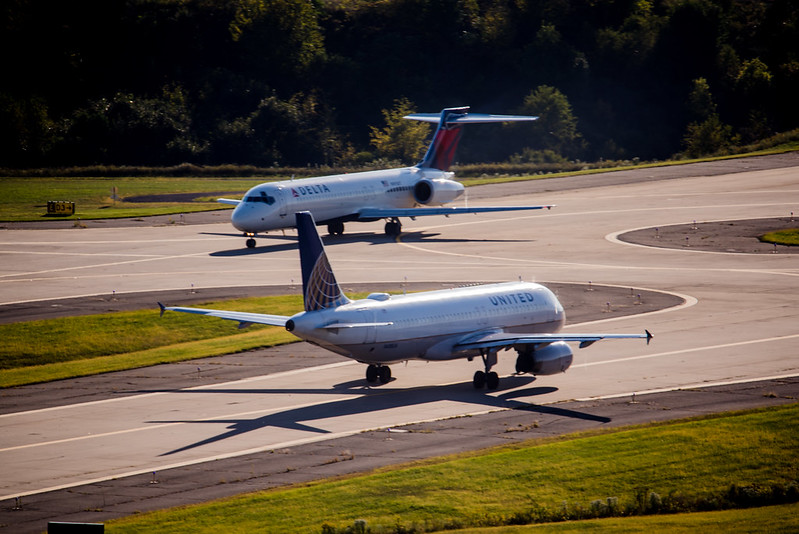Where In the World Can Americans Fly Now?
Many countries have banned travel from the U.S., and domestic airlines feel the pinch
By Natalie Fiorilli
Published July 27, 2020
Read Time: 4 mins
When it comes to international travel, Americans are finding themselves on a new kind of “no-fly list” this summer.
As the COVID-19 pandemic appears to have stabilized in parts of the European Union, many of those countries are beginning to reopen their borders to foreign travelers.
Just not U.S. travelers.
Citizens from more than 10 countries can now travel to the European Union, including Japan, Australia, Canada, Thailand and New Zealand. But with coronavirus infection rates continuing to rise in the U.S., the EU has extended its ban on American travelers.
Travel to the Bahamas, a popular American tourist destination, has been in flux. Earlier in July, the Bahamas opened its doors to tourists, including Americans. Then, on July 19, the country announced a ban on U.S. travelers, citing the increase in coronavirus cases.
“The highest number of confirmed cases is in the Americas, with approximately 7.3 million cases,” Bahamian Prime Minister Hubert Minnis said in a national address, referring to the World Health Organization’s label for North and South America, as well as the Caribbean.
“While there are countries that continue to make progress, such progress can be reversed because of what is happening in neighboring and other countries.”
Over the weekend, the Bahamas updated its ban. Now, travelers (including U.S. citizens) are required to quarantine for 14 days upon arrival and must take a COVID-19 test upon completion of their time in isolation.
Restrictions vary
So where can Americans travel?
Worldwide, nearly 200 countries are either completely closed or are partially open—either welcoming travelers from a list of specified countries or only allowing visitors based on citizenship and other guidelines.
According to data provided by the International Air Transport Association, only about 35 countries have no travel restrictions. Among countries without restrictions are Mexico, the United Kingdom, Egypt and Afghanistan.
The few countries currently accepting U.S. visitors include a number of Caribbean islands like Aruba, Barbados, Jamaica, St. Barts and St. Lucia. Other countries allowing American travelers include Mexico, the United Kingdom, Croatia, Turkey, Egypt and Albania, to name a few.
And while some countries are allowing visitors from the U.S., a majority are requiring coronavirus tests and other health declarations from travelers.

The “big three” carriers —American, United and Delta— operated flights to hundreds of international destinations before the pandemic. (Photo by Beth Hollerich)
In July 2019, roughly 5,000 international flights operated out of U.S. airports daily. Today, that number is down more than 80 percent, sitting below 900 daily flights.
“The reality is that international traffic is a fraction of what it used to be,” said Nicolás Mirman, a Dallas-based aviation consultant.
Of U.S. carriers, the “big three” —American, United and Delta—have been hit hardest by the decline. International destinations make up significant portions of their networks.
Last year, United flew to approximately 275 international destinations—about 26 percent of its total destinations served. In July, the Chicago-based carrier flew to fewer than 60 of those destinations, with the majority of international flights operating in and out of Latin America.
American Airlines, the world’s largest airline, served more than 300 international destinations in 2019. The Fort-Worth, Texas-based carrier’s international flights account for 26 percent of its entire network of more than 1,200 destinations. In July, American flew to roughly 70 international destinations.
Delta flew to about 40 of its international destinations in July; last year, it operated more than 260 international routes.
“If you compare it to where we were last year, it’s nothing,” said Brett Snyder, editor of the Cranky Flier aviation blog.
Though the routes don’t make up the majority of American, United and Delta’s networks, the drop in international flying remains significant.
“It’s a huge deal,” explained Snyder. “You have to remember that international fares are much higher [than domestic flights], so you’re talking about a bigger piece of the revenue pie. With international travel, there’s a lot of high-dollar business class travel and big money that you just don’t see on domestic flights.”
Data provided by trade group Airlines for America shows that the drop in travel demand caused U.S. airlines to burn about $10 billion per month in March, a figure that is now around $5 billion.
Because of the drop in passenger traffic, for both international and domestic routes, American, Delta and United are among a number of carriers that are expected to downsize their networks and overall operations.
And while no one can predict when exactly international travel will return, it’s certain that things will be different.
“Before [the pandemic], airlines were experimenting with a lot of different seasonal, nonstop flights to destinations, like Philadelphia to Dubrovnik, Croatia, or Newark, New Jersey, to Naples, Italy,” Snyder explained.
“Those types of flights rely on huge masses of people traveling. We’re probably going to go back to the way it used to be: connecting through big, European hubs so that those routes will succeed.”
Watch
This Next
Read
This Next





